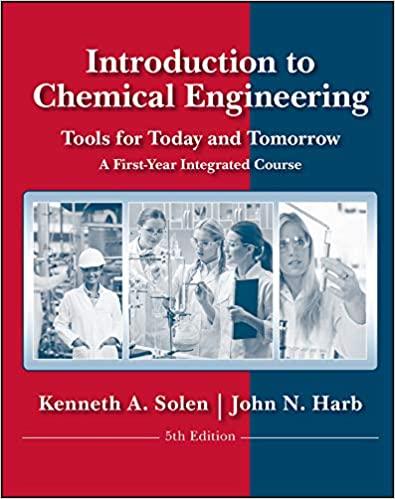The intermediate product of a chemical process is a chemical paste that is saturated with water. The
Question:
The intermediate product of a chemical process is a chemical paste that is saturated with water. The paste is rolled into a thin layer and placed to dry in a flat area 30 m long by 15 m wide. Drying is enhanced by blowing hot air over the paste, and the mass-transfer coefficient is 0.017 m/s. Diffusion of water through the paste is rapid so that the concentration of water vapor at the surface of the paste remains constant at 0.002 gmol/L. Water must be removed from the paste at a minimum rate of 9.5 L/min (liquid volume). (MWwater = 18 and rwater = 1 g/cm3.)
a. What mechanism controls the transfer of water from the paste into the air?
b. What is the molar rate of water removal that corresponds to a volumetric removal rate of 9.5 L/min?
c. What is the maximum concentration of water vapor allowable in the air (far away from the paste surface) if water must be removed at a rate of at least 9.5 L/min?
d. Assuming that the mass-transfer coefficient remains constant, what can be done to increase the rate of water removal from the paste?
Step by Step Answer:

Introduction To Chemical Engineering Tools For Today And Tomorrow
ISBN: 9780470885727
5th Edition
Authors: Kenneth A. Solen, John N. Harb





